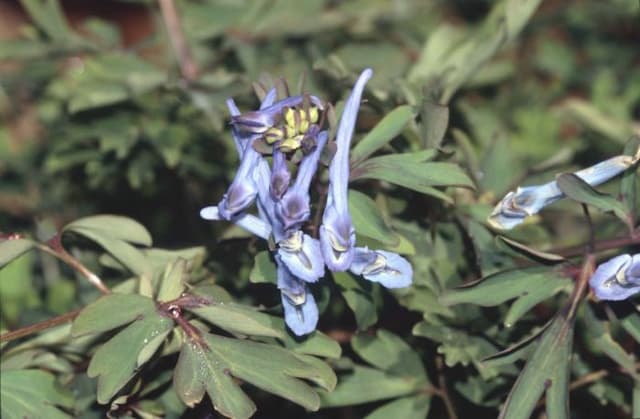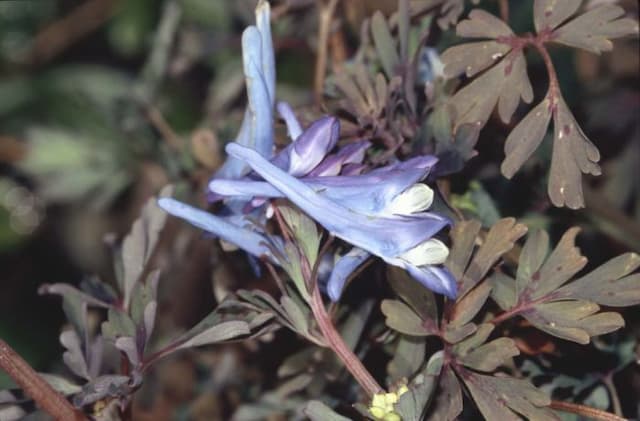California Poppy Eschscholzia californica Thai Silk Series

ABOUT
The California poppy from the Thai Silk Series showcases a stunning array of colorful blooms that often display a mix of vibrant hues including shades of orange, yellow, pink, and white. The petals of this flamboyant poppy are overlaid with a silky sheen that glistens in the sunlight, contributing to its name. Additionally, these flowers can exhibit a variety of patterns, sometimes presenting a solid color and other times being delicately streaked or edged in contrasting hues. The blossoms rise on slender, wiry stems that emerge from a base of feathery, blue-green foliage. The leaves themselves are finely divided and have a fern-like appearance, providing a delicate texture that contrasts beautifully with the silky blooms. This ornamental variety of the California poppy is known for its extended flowering period, allowing one to enjoy its striking colors throughout the growing season. Its radiant flowers tend to open when they are bathed in sunlight and close again at night or during cloudy weather.
About this plant
 Names
NamesFamily
Papaveraceae
Synonyms
California Poppy, Golden Poppy, California Sunlight, Cup of Gold
Common names
Eschscholzia californica Thai Silk Series.
 Toxicity
ToxicityTo humans
California Poppy is generally considered safe and non-toxic for humans when touched or ingested in small quantities. There is no widespread evidence of significant poisonous effects from consuming California Poppy. However, as with many plants, it is not commonly consumed as food, and ingesting large quantities could potentially lead to unspecified negative health consequences, as with any non-food plant. If accidental ingestion occurs, especially in significant amounts, it is prudent to monitor for any signs of gastrointestinal upset, such as nausea, vomiting, or diarrhea, and to seek medical consultation if any such symptoms arise.
To pets
California Poppy is not known to be toxic to pets, including dogs and cats. It is generally considered low-risk, and there is no widespread evidence of severe poisoning in pets from ingesting this plant. Nonetheless, it's not advisable for pets to consume plant material, especially in large quantities, as they could experience mild gastrointestinal upset, including vomiting or diarrhea, from ingesting non-food plant parts. If your pet consumes California Poppy and shows concerning symptoms, it is best to consult a veterinarian.
 Characteristics
CharacteristicsLife cycle
Annuals
Foliage type
Deciduous
Color of leaves
Blue-green
Flower color
Mixed
Height
1 foot (0.3 meters)
Spread
1 foot (0.3 meters)
Plant type
Herb
Hardiness zones
6
Native area
California
Benefits
 General Benefits
General Benefits- Drought Tolerance: Once established, the California poppy can survive with minimal watering, making it an ideal plant for arid and drought-prone climates.
- Low Maintenance: This variety typically requires little care, other than the occasional deadheading to promote continuous blooming.
- Attracts Pollinators: The bright flowers are known to attract bees and butterflies, making it beneficial for the local ecosystem and for pollinating gardens.
- Easy to Grow: The Thai Silk Series of the California poppy is known for being easy to grow from seed, making it a great choice for novice gardeners.
- Landscape Beautification: With vibrant colors that can vary within the series, the California poppy adds visual appeal to gardens, borders, and wildflower mixes.
- Self-Seeding: These plants often self-seed, producing new plants in subsequent years without the need for replanting.
- Resistant to Pests: Generally, the California poppy has few problems with pests, reducing the need for chemical treatments.
- Soil Adaptability: It can thrive in a variety of soil types, although it prefers well-drained soils.
- Fast Growth: The plant grows quickly, providing swift gratification in garden spaces or landscaped areas.
 Medical Properties
Medical Properties- Anxiety Relief: California poppy has traditionally been used to help alleviate anxiety and nervousness.
- Sleep Aid: Due to its mild sedative effects, it has been used to promote relaxation and sleep.
- Pain Reliever: It has been used historically to address pain such as toothaches and headaches.
- Antispasmodic: The herb may help relieve muscle spasms and cramps.
 Air-purifying Qualities
Air-purifying QualitiesThis plant is not specifically known for air purifying qualities.
 Other Uses
Other Uses- California poppy can be used as a natural dye for fabrics, yielding a vibrant yellow or orange hue depending on the mordant used.
- The petals of the California poppy can be incorporated into potpourri blends for a pop of color and a light, calming fragrance.
- Dried California poppy flowers can be utilized in crafting, such as for making homemade paper or botanical bookmarks.
- The colorful blooms of California poppy can be pressed and used in decorative glass frames or resin jewelry for aesthetic adornment.
- Floral arrangements and wedding bouquets often include California poppies for their lively colors and delicate appearance.
- Gardeners can use the California poppy for companion planting, as it attracts beneficial insects like pollinators and can deter pests.
- California poppy seeds can be added to exfoliating homemade soaps or scrubs for their texture and gentle abrasive properties.
- Edible parts of the plant, like the petals, can be used as a colorful garnish for salads and desserts, adding a unique flair to dishes.
- The visual appeal of California poppy fields can be harnessed for photographic purposes, providing a stunning backdrop for portraits and landscape photography.
- California poppies can be included in educational projects and activities to help children learn about plant life cycles and botany.
Interesting Facts
 Feng Shui
Feng ShuiThe California Poppy is not used in Feng Shui practice.
 Zodiac Sign Compitability
Zodiac Sign CompitabilityThe California Poppy is not used in astrology practice.
 Plant Symbolism
Plant Symbolism- California Poppy: The California Poppy, or Eschscholzia californica Thai Silk Series, typically represents sleep, peace, and rest. Its association with sleep stems from the poppy's sedative properties and its use as a remedy for insomnia.
- Beauty: With its vibrant and delicate petals, the California Poppy symbolizes beauty in life. It’s also a reminder to appreciate the aesthetic pleasures of our natural world.
- Resilience: As the state flower of California, it's known for its ability to thrive in arid conditions, making it a symbol of resilience and hardiness.
 Water
WaterCalifornia Poppies require moderate watering and should be watered deeply once a week, allowing the soil to dry out between waterings. In especially hot and dry conditions, increase the frequency to twice a week but ensure not to overwater as these plants are drought-tolerant and may suffer from too much moisture. Typically, a deep watering might involve up to 1.5 gallons per square yard every week during active growth periods. Adjust the amount based on rainfall, with less water required during wet seasons.
 Light
LightCalifornia Poppies thrive in full sunlight and should be placed in a spot where they can receive at least 6 to 8 hours of direct sunlight each day. They can tolerate partial shade, but their flowering might be reduced. A south-facing position is ideal to ensure they get plenty of light, which is crucial for their growth and flowering.
 Temperature
TemperatureCalifornia Poppies prefer cooler temperatures, thriving in conditions between 50°F and 75°F. They can survive minimum temperatures down to around 20°F and maximum temperatures up to about 100°F, but prolonged exposure to extremes can be harmful. The ideal temperature range promotes healthy growth and abundant flowering.
 Pruning
PruningPruning California Poppies is not typically necessary, but deadheading spent blooms can encourage further flowering. The best time to prune is after each wave of blooming is over. Cut back the faded flowers to the base of their stem to promote a second or even third flush of flowers during the season. Prune as needed throughout the blooming season.
 Cleaning
CleaningNot needed
 Soil
SoilFor the California Poppy, a well-drained soil mix with added sand or gravel works best. They prefer slightly acidic to neutral soil with a pH of 6.0 to 7.5.
 Repotting
RepottingCalifornia Poppies are typically grown as annuals and do not usually require repotting. Sow seeds directly where they are to flower.
 Humidity & Misting
Humidity & MistingCalifornia Poppies are drought tolerant and thrive in a range of humidity levels, adapting to typical outdoor conditions.
 Suitable locations
Suitable locationsIndoor
Provide full sun, well-drained soil, and minimal water to grow indoors.
Outdoor
Plant in full sun, well-draining soil, and water sparingly.
Hardiness zone
5-10 USDA
 Life cycle
Life cycleCalifornia poppy from the Thai Silk Series starts its life as a seed, which when sown and given the right conditions of warmth and moisture, will germinate into a small seedling. The seedling grows by developing true leaves and setting down roots, becoming an established young plant. As it matures, it develops a foliage clump and begins to bud as it enters the flowering stage; the Thai Silk Series is prized for its silky, vibrant multi-colored blooms which attract pollinators. After pollination, flowers will fade and the plant will produce pods containing seeds. These seeds eventually dry and disperse from the mother plant, ready to begin the life cycle anew. California poppy is a perennial in mild climates but is often grown as an annual in colder regions, completing its life cycle within a single growing season.
 Propogation
PropogationPropogation time
Spring to early summer
The Eschscholzia californica, commonly known as the California Poppy, can be propagated from seeds, which is the most popular and straightforward method for this species. Ideally, seeds should be sown directly into the garden where they are to flower, as California Poppies do not transplant well. The best time to sow seeds is in early spring or autumn, depending on your climate zone, so they can take advantage of the cooler and wetter conditions to germinate and establish their root systems. To propagate, one would scatter the seeds on loosened soil and cover them lightly with about 1/16 inch (approximately 1.6 millimeters) of soil. Water the area gently to keep the soil moist until germination, which usually takes 14-21 days. Once the seedlings are large enough to handle, thin them to stand 6 to 12 inches (15 to 30 centimeters) apart to allow for full growth and best flower production.









